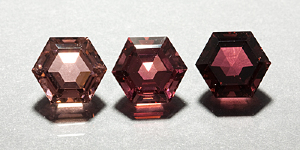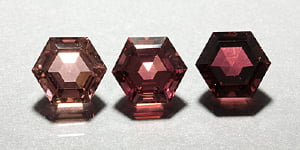- Joined
- Mar 25, 2009
- Messages
- 298
Re: Description: heat-treatment process - Nigerian Tourmalin
Re: heating Tourmaline
The highest I've heated Tourmaline, was to 750*C. It turned 'blackish' and looked toasted. It became less transparent, and was no longer green, but black-green. I did not plan to heat to 750*C, as this was in error. Costly error.
In my experience, there is little reason to go over 650*C. The vast majority of color alteration should take place between 400*C and 600*C. There is a large variation in the way they respond, and this is mostly due to content. Each mining area will have their own peculiarities, and then there is variation within goods from the same site. It is not like there is some perfect recipe - this technique takes time, risk, and a willingness to accept the failures.
Regarding inclusions, I have heated included Tourmalines. And, if, one takes the heating process very slowly, they may survive. But even then there is no guarantee.
Hope you find this helpful.
Hi Pandora,Pandora|1301787474|2886222 said:stylish1|1301783671|2886177 said:This information is from a book by Richard T. Liddicoat, Jr. A well known gemologist. I think that what he is saying is that when most any stone is heated or treated a good appraiser or gem identifier should be able to confirm the process has been done. This is for beryl, tourmaline, or spinel, etc.
Unfortunately this book by Liddicoat aka The Father of Gemmology, was published in 1947. Liddicoat himself died in 2002. Gem treatments have moved on significantly in the last 9 years let alone in the last 63.
My understanding is that irradiation of tourmaline cannot be detected in a laboratory. As far as heating goes, I would be interested to know how high a temperature it can be heated to get a good result. I imagine that inclusions will not be altered at the lower temperatures and so the chances of detection are low.
Re: heating Tourmaline
The highest I've heated Tourmaline, was to 750*C. It turned 'blackish' and looked toasted. It became less transparent, and was no longer green, but black-green. I did not plan to heat to 750*C, as this was in error. Costly error.
In my experience, there is little reason to go over 650*C. The vast majority of color alteration should take place between 400*C and 600*C. There is a large variation in the way they respond, and this is mostly due to content. Each mining area will have their own peculiarities, and then there is variation within goods from the same site. It is not like there is some perfect recipe - this technique takes time, risk, and a willingness to accept the failures.
Regarding inclusions, I have heated included Tourmalines. And, if, one takes the heating process very slowly, they may survive. But even then there is no guarantee.
Hope you find this helpful.





300x240.png)